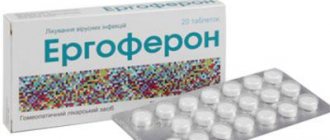One-time vomiting sometimes occurs in a healthy dog and should not cause concern. Often, a dog will deliberately induce vomiting by eating grass. She does this in cases of deterioration of digestion, in order to ease the sensations in the stomach. However, if a dog eats grass constantly, this may be a sign of the appearance of worms.
But persistent vomiting, in which simultaneously there are also signs of the disease such as loss of appetite, increased drowsiness, depression, constipation or diarrhea, should cause concern. Vomiting can cause severe dehydration and other more serious problems.
Symptoms of vomiting in dogs
- Signs of a dangerous disease before vomiting are: excessive drooling in the dog, whining and constant walking. The animal does not find a place for itself, its stomach may growl, and belching will appear.
- Puppies often regurgitate when they begin to eat solid food. This is a normal process that should not bother the owner. Regurgitation occurs when the puppy overeats immediately after eating and undigested food comes out with it.
- With vomiting, food comes out of the stomach, already digested.
- Vomiting blood in a dog is a very alarming symptom.
It indicates a serious infection, tumor disintegration or mucosal erosion. - Vomiting and diarrhea in a dog, along with fever, are frequent accompaniments of infectious diseases and together they lead to rapid exhaustion.
- If the mouth smells of ammonia, then the diagnosis may be uremia and kidney failure.
Vomiting of blood, bile, or foam in a dog. What to do? How to treat?
- While waiting for the doctor and test results, it is important for a dog owner to properly handle a dog that is vomiting.
- The body must be cleansed by not giving the dog not only food, but also water for a day. You can allow him to lick ice cubes or if he ate for a couple of hours and the vomiting does not recur, you can offer a little chicken broth.
- On the second day, you can give liquid and bland food: turkey breast puree or white chicken meat in small portions 4-6 times a day. You can add fresh herbs and brown rice to it.
- You can add regular food to the puree only from the third day.
- If there is severe, persistent vomiting, a blood test is needed to help determine if the animal has kidney or liver disease, cancer, diabetes, or allergies. An x-ray of the abdominal cavity is also needed, with which you can find out if the dog has a cancerous tumor or foreign body.
The appearance of blood in the vomit is a very alarming sign and requires urgent medical attention. This may indicate a foreign body in the dog's stomach or esophagus, or a severe viral illness.
Vomiting in dogs is not uncommon, and there are many reasons for this reaction. There is no need to panic right away, since the gag reflex does not always indicate serious problems. What should you pay special attention to and how to behave if your dog starts vomiting?
A dog cannot talk about its health, so only by external signs can the owner find out that not everything is all right with his beloved pet. As you know, vomiting is preceded by nausea, and it can affect the dog's behavior:
- the animal often licks its face;
- refuses food, does not drink water;
- profuse salivation occurs;
- the dog shows anxiety and constantly moves chaotically;
- The pet's stomach growls and makes a loud burp.
In addition, often before vomiting, the pet may have a bowel disorder: both diarrhea and.
Quite often, dog owners confuse two concepts - vomiting and regurgitation; if in the first situation the food comes out in the form of digested slurry, then in the second it does not have time to go through the processing process.
Causes of vomiting water, why does the vomit contain a lot of liquid?
Vomiting liquid is not a common occurrence, unless you take into account vomiting caused for the purpose of gastric lavage. Factors contributing to the occurrence of liquid vomiting in childhood:
1 appearance of the first teeth;
2 some diseases of the ENT organs;
3 ARVI;
4 rhinitis.
All of the above diseases contribute to the entry of excessive amounts of mucus into the patient’s stomach. As a result, irritation of the mucous membrane occurs, which causes gagging and the child vomits liquid. In addition, vomiting water occurs due to inhalation of too dry air, being outside in the cold, and also as a manifestation of allergies. As a result, the body protects itself from natural factors by producing a large volume of mucus, which irritates the gastric mucosa when it enters it.
Vomiting liquid does not require drug treatment; it is enough to eliminate the initial disease or create favorable living conditions for the child. As for the appearance of vomiting liquid in an adult, the most likely cause is too long time intervals between meals. All this time, gastric juice is produced in the human body. And the longer he doesn’t eat, the more juice collects in his stomach. Over time, the stomach becomes full, causing vomiting. In this case, the vomit consists directly of juice, which is visually very similar to water.
It happens that a person does not feel hungry, but nevertheless the body needs nutrition. This is why gastric juice is released in large quantities, causing vomiting.
Causes of vomiting in dogs
Of course, this phenomenon cannot be called pleasant, but it also has its positive aspects. Vomiting is, first of all, a defense mechanism of the body, with the help of which all poisonous, toxic substances and foreign objects are released from it. By cleansing itself in this way, the body protects itself from negative influences.
Among the causes of vomiting are the following:
Vomiting often signals some kind of disease and in most cases has distinctive characteristics. The main symptoms of vomiting in dogs:
- vomiting blood can be a symptom of oncology, ulcerative lesions or gastric bleeding; the blood can be bright scarlet or brown, it depends on the duration of the bleeding;
- vomiting several hours after eating - often occurs against the background of cancer;
- vomiting with bile (yellow), excrement indicates intestinal obstruction or helminthic infestation (in this case, the animal begins to eat grass at every convenient moment, after which vomiting occurs);
- if vomiting occurs repeatedly, is accompanied by diarrhea, and a clear ammonia smell emanates from the mouth, then this is a sign of a disorder of renal function (renal failure) or uremia;
- repeated vomiting may be a sign of inflammation of the pancreas, gallbladder, hepatic colic;
- A dog vomits on an empty stomach or as soon as it eats, which means it most likely has gastritis.
Algorithm of actions
If defecation does not cause pain, it is important to reconsider the composition of the medications you are taking. For example, the natural color of stool is changed by iron supplements, and the structure is disrupted by certain antibiotics. In another scenario, the anal fissures may deepen due to constipation. In some cases, bloody stools indicate bleeding in the upper gastrointestinal tract. And all because hemoglobin simply does not have time to come into contact with hydrogen chloride. Therefore, the blood retains its natural color.
Self-medication in this case is dangerous due to complications from the digestive tract, cardiovascular and nervous systems. Improper treatment can cause diarrhea, nausea, vomiting, rapid heartbeat and anemia.
Vomiting with white foam
Often dog owners are afraid of their pet vomiting containing white foam. Is there any cause for concern?
In fact, there is an explanation for this phenomenon at the physiological level. If vomiting occurs some time after the dog has eaten, then it is during this period that food is pushed from the stomach further along the gastrointestinal tract. The stomach itself turns out to be empty and its walls, as protection from corrosion by gastric juice, are covered with a layer of mucus.
The mucous coating contains proteins and polysaccharides, which promote the formation of structural cellular masses after swallowing air.
If your dog is vomiting white, foamy discharge, there is no need to worry too much, as this phenomenon confirms that the animal does not have any serious illnesses. If this happens once, then no treatment is required. If this happens many times, then a trip to the veterinary clinic becomes mandatory.
Does your dog vomit white foam on an empty stomach? This means that we may be talking about a violation of the functions of bile secretion, which normally should enter the large intestine after each meal. In this case, the liver secretes the necessary enzyme fluid during hunger, which irritates the intestinal walls. After this, a forced movement of bile into the stomach occurs. The dog's vomiting is not severe, after which the pet is again ready to eat. This phenomenon is not considered a pathology, and normally can be repeated once every 7 days.
But if the vomit is covered not with white, but with yellow foam, then this is a sign of a serious illness.
Home remedies for the problem
Vomiting black liquid, what it is and whether it can be dealt with at home, everyone who has encountered it will ask. Self-medication is allowed if the cause of vomiting is not a disease of the gastrointestinal tract or cancer. For food poisoning accompanied by dark discharge from the stomach, use:
- Two to three ripe peaches.
- Drink half a glass of red currant juice.
- Potato juice. To obtain juice, potatoes are grated or crushed in a blender, and the potato mass is squeezed through cheesecloth.
- Infusion of lemon zest and alcohol. Pour the peels of three lemons with half a glass of alcohol and 200 ml of water. Leave for three days in a dark place.
Correct actions when a dog is vomiting
Do all owners know what to do, and even more so, what is best to avoid if their pet starts vomiting? Of course, first of all, there is no need to panic and assess the situation sensibly. Even if medical attention is necessary, the owner must comply with the following rules:
- A dog that vomits is not to be blamed. There is no point in scolding your pet for something he cannot control. After all, this natural process, which cleanses the body of harmful effects, is necessary for further successful treatment.
- Don't try to stop vomiting.
- Only the owner can assess the situation and find out the cause of this phenomenon. Maybe the dog ate too much food, was poisoned, suffered a heatstroke, etc. - the more accurate the data received by the veterinarian, the sooner effective treatment will be determined.
- The dog owner should record the number of vomits, their consistency, color, content, as well as accompanying symptoms - all this is valuable information for diagnosing the disease.
- When vomiting, the body requires maximum cleaning, so you should not feed your pet for the first day. If on the second day the vomiting has passed, then you can introduce liquid food without salt and spices into the diet.
- The same applies to drinking - you will have to give it up for a day, and in return offer the dog to lick ice cubes. If vomiting does not recur within two to three hours, then you can give your dog some low-fat chicken broth.
After you can give your pet food, you should take care of its dietary nutrition. Suitable foods include turkey breast, chicken breast, and fresh herbs. As for cereals, it is better to give preference to brown rice and rolled oats. During this period, the dog must be fed in small portions, up to six times a day. Food must be fresh and warm.
If the vomiting process is completed, then on the third day you can introduce the pet’s usual food into the diet.
Division by gender
The body of an adult man contains 5–6 liters of blood, while in 39% of women this figure does not exceed 4 liters. Taking into account the structural features of the abdominal organs and muscle tissue, we can talk about various manifestations of the disease.
In men
According to international studies, rectal bleeding occurs more often in men. In 54% of cases, this is facilitated by the abuse of alcohol and tobacco products. The latter interfere with blood clotting and increase intestinal motility. This is why experienced smokers often experience a false urge to defecate. With intense straining, blood flows faster to the veins of the anus. This is how hemorrhoidal compactions are formed.
Intense physical labor can also impair blood circulation. Loaders, builders, steelworkers, timber fellers, concrete workers and metallurgists are more often at risk. Every second of them experiences rectal bleeding from hard work.
Among women
A slight discharge of blood from the anus is observed during pregnancy and menstruation. This is facilitated by reduced physical activity, abuse of sweets, and in some cases, lack of water in the body. Endometriosis can also cause rectal bleeding. With this disease, the enlarged uterine mucosa affects other organs, including the rectum. And the release of blood from the anus is possible not only during menstruation, but also long before it begins.
Experts include other causes of illness in women:
- Increased levels of progesterone in the body of the expectant mother. This sex hormone is necessary for bearing a fetus, and it often causes regular constipation.
- Decreased uterine tone after cesarean section. During this period, the body adapts poorly to new changes.
- Syndrome of blood clotting inside blood vessels.
- Thrombosis of tubular formations with subsequent necrosis of intestinal loops.
- Varicose veins of the pelvis caused by frequent pregnancies.
Diagnosis and treatment of vomiting in dogs
A veterinary clinic will conduct diagnostic testing to treat vomiting in dogs if it continues and is accompanied by alarming symptoms. It includes the following procedures:
- general blood analysis;
- abdominal radiography;
- Ultrasound of the peritoneum.
Drug therapy is prescribed according to the clinical picture and consists of eliminating the accompanying symptoms:
- To eliminate gastrointestinal spasms, No-shpa (Drotaverine) or Papaverine is prescribed.
- To eliminate nausea and normalize gastric contractions - Cerucal.
- In case of increased acidity of the gastric flora and elimination of irritation, the drug Omez is prescribed.
- If vomiting has led to the risk of dehydration, then two drugs are prescribed by drip at once - Glucose and Ringer's infusion solution.
- To remove toxic components from the pet’s body, absorbent agents are prescribed - Smecta, Enterosgel, Polysorb, activated carbon.
- The homeopathic veterinary remedy Verokol is often prescribed and used as first aid until vomiting completely stops.
If there is a dog living in the house, then you need to be prepared for the fact that it may get sick. And in some cases, first aid from the owner has a decisive effect on the success of the entire treatment. The same applies to vomiting, which can be either a natural or pathogenic phenomenon.
Bloody vomiting in a pet is a serious symptom indicating the presence of bleeding in the stomach; you should contact your veterinarian for examination.
Vomiting black liquid, why do you feel sick and vomit black liquid?
Vomiting of black liquid is most often observed in people under anesthesia, since deep anesthesia can to some extent affect the psyche and physiology of a person. In order to stop the effect of anesthesia, doctors use Reglan and Torekan, which cause blackening of the stomach contents. However, the very fact of vomiting is observed in patients extremely rarely, since immediately before the operation they are forced to empty their stomach and intestines on their own.
Black vomit is a constant companion to chemotherapy of any kind. Nausea can have very different degrees of severity and, as a result, cause vomiting or not. To prevent this condition, doctors recommend not eating anything for several hours before chemotherapy. If nausea does occur, then you need to limit unnecessary movements and try to breathe deeply and slowly.
Causes
The main factors leading to this is gastric bleeding. Reasons for the presence of blood in vomit:
- injuries to internal organs related to the gastrointestinal tract, as well as the upper respiratory tract;
- the development of infectious diseases leading to disruption of the functioning of the digestive system;
- poisoning of the dog’s body due to poisonous or chemical substances eaten, as well as medications, which caused intoxication;
- an unbalanced diet or a sudden change in it, leading to intolerance to the food taken;
- the presence of malignant tumors of the gastrointestinal tract;
- presence of open gastric ulcer;
- development of worms;
- kidney or liver pathologies;
- development of intestinal obstruction.
The presence of additional temperature, as well as diarrhea, indicates the appearance of an acute infection, in the form of plague, leptospirosis or parvovirus enteritis.
Puppies with such diseases have an extremely high mortality rate.
Characteristics and description
In rare cases, bloody stools are caused by HIV infections. A complete examination will be required for an accurate diagnosis and adequate treatment. At first, the color of feces will help to understand the cause of such a strange, but still painless pathology.
Red stool, for example, may indicate malignancies and polyps. The latter are outgrowths of the intestinal mucosa. When they reach abnormal sizes, up to 70 ml of blood is released from the anus daily. If this symptom is left unattended, the benign cells of the polyp will soon become malignant.
Cherry color of feces indicates pathologies of the colon. The main symptoms of this disease are increasing stomach pain, flatulence and regular constipation. Together with feces, patients leave up to 50 ml of blood mixed with pus every day. Scarlet-colored stool is a sign of deepened anal fissures and hemorrhoids. Dark clots may indicate an intestinal diverticulum, and black stool may indicate pathology of the duodenum.
What to do at home
Before visiting the veterinarian, the following rules must be observed:
- Observe the behavior of the animal, recording all the details. This will help you make an accurate diagnosis at your doctor’s appointment;
- It is forbidden to feed the animal after bloody vomiting appears. You should also only use ice cubes for drinking. Excessive intake of water into the stomach can cause new vomiting of blood;
- You cannot independently treat an animal with medications or folk remedies to stop the eruption of stomach contents. Vomiting allows the body to get rid of poisonous toxins, and forcing it to stop will only cause harm.
Treatment by a veterinarian
After examination and diagnosis by a doctor, he can prescribe a set of drugs to eliminate the cause itself:
- droppers for dehydration: Glucose, Ringer's solution, saline;
- antispasmodic: No-shpa;
- antiemetics: Cerucal;
- absorbent agents: Enetrosgel, activated carbon, Polysorb, Smecta;
- for infection, titrated antibiotics are used, those to which the pathogen is sensitive;
- anthelmintics: Prazicide;
- immunomodulators: Mexidol, Glycopin, Fosprenil;
- to reduce acidity levels: Omez;
- vitamin complexes to support a weakened body.
You cannot ignore visiting a doctor and refuse to treat your dog in a hospital setting. Serious diseases cannot be cured on your own.
Prevention
To prevent bloody vomiting in the dog, food is given fresh and high-quality food, without sudden changes in regime and diet. Regular examinations by a veterinarian can identify organ pathologies. Quarterly intake of anthelmintic drugs prevents their development.
Sudden vomiting in a dog can frighten the owner and cause discomfort to the animal. The causes of vomiting in a pet can be different. Vomiting is a reflex reaction that protects the body from poisons, toxins, inedible objects and substances.
You should find out the cause of your dog's vomiting.
Vomiting can be physiological or pathological.
An example of physiological vomiting is regurgitation in puppies that have overfed their mother's milk. Some foods can overstimulate your taste buds and cause you to gag. The physiological type of vomiting does not require correction or treatment and usually goes away on its own. But pathological vomiting requires clarification of the causes and appropriate treatment.
Causes
Poor quality food can cause poisoning in a dog.
A dog may have health problems with certain organs, so vomiting will vary. Among the main reasons causing the gag reflex, several of the most common can be identified:
In street water and ponds, a dog can easily become infected with worms.
All causes of nausea (nausea). Symptoms, treatment
It is probably impossible to find a person who is not familiar with such a condition as nausea.
Moreover, the causes of nausea are not always obvious at first glance. It is rare that this condition quickly goes away on its own, and it is completely unpleasant when nausea haunts a person constantly. We will talk to you about what factors cause nausea, its causes (except pregnancy, among other things), and how to get rid of it.
If nausea constantly haunts you, the reasons for this most often lie in diseases of the digestive system, although, of course, there are cases of neurological disorders, disorders of the endocrine system and heart function, in which a feeling of nausea appears along with other symptoms.
Nausea - causes
As you know, you can get rid of any symptom if you influence the cause of its occurrence. Nausea is no exception.
If you experience nausea after eating, the reasons for this lie precisely in these inflammatory processes. Along with nausea, there will be the following symptoms: heaviness in the stomach, a feeling of fullness after eating. On an empty stomach, you may feel a burning sensation in the stomach area.
A specialist will help you determine the diagnosis by conducting a series of studies. And you should also forget about spicy, smoked and fatty foods for now and switch to a dietary diet.
- Problems with the gallbladder
In this case, nausea appears during the process of eating, along with a feeling of fullness from the inside. Associated symptoms: metallic taste in the mouth or bitterness, gas formation, pain in the right hypochondrium, heartburn.
- Symptom of poisoning or intestinal infection
After some time has passed after eating, a person begins to experience nausea, which results in vomiting. Pain is noticeably felt in the navel area, dizziness, weakness appear, and the temperature may rise to 37-38°. In this condition, it is imperative to take measures, because diarrhea and dehydration will be added to it.
First, drink a couple of glasses of warm water in small sips; you need to induce vomiting. Then your task is to replenish the missing fluid: drink water, fruit drinks, weak teas. Two to four tablets of activated carbon will also help you.
If you cannot get rid of vomiting and bile is found in it, dizziness begins - this may indicate that a serious infection has entered the body (salmonellosis, for example), in this case it is worth calling an ambulance.
- Inflammatory processes in the kidneys
This cause of nausea is not related to food intake. In some cases, nausea can result in vomiting. An important symptom that indicates that the cause of this nausea is inflammation in the kidneys is lower back pain and problems with urination.
- Pancreatitis is an inflammatory disease of the pancreas
In people suffering from this problem, nausea and bloating appear after eating, accompanied by pain in the right hypochondrium and the appearance of bitterness in the mouth.
With this disease, constant nausea is possible, which most often appears in the morning. Then in the morning, a person with hypertension may experience swelling and redness of the face, increased fatigue, and often dizziness.
If you read the instructions for the medications you purchase, you will note that many of them can cause nausea as a side effect. Such medications include antibiotics, anti-influenza and anti-inflammatory drugs, iron-containing drugs, some vitamin complexes, etc.
If you seriously hurt your head and feel dizzy and persistently nauseous all the time, consult a doctor immediately.
Regardless of food, nausea may occur in patients with appendicitis; in some cases, nausea will progress to vomiting. The pain will first appear in the upper abdomen, then it will gradually move to the lower right part. An increase in temperature to 37-38° is another symptom of appendicitis.
- Problems with the vestibular system
Severe dizziness and nausea are frequent accompaniments of a sudden change in body position when you roll over or get out of bed. Other signs include the appearance of tinnitus, problems with balance, “spots” in front of the eyes, and the inability to focus for a long time on a moving object.
- Symptom of heart attack and heart failure
With these problems, even after vomiting, nausea remains, accompanied by pain in the upper abdomen. In heart failure, the following symptoms are also common: pale skin, hiccups, and a feeling of suffocation.
Slight dizziness may be added to nausea. If you have nausea due to headaches, you can be “saved” by a quiet, dark room and taking a drug prescribed by a neurologist.
Many have noticed how, with strong excitement and emotional arousal, they begin to feel nauseous. Once you calm down, breathe deeply, the adrenaline in the body decreases and the nausea goes away.
- One of the symptoms of meningitis
Nausea is accompanied by a high temperature - from 38°C, photophobia, and a feeling of constriction in the occipital region.
- Hypothyroidism – problems with the thyroid gland
Nausea may accompany you constantly, although not clearly expressed. There may be no appetite, but weight is still gained, a constant feeling of drowsiness, fatigue, cold in hot weather, and in some cases anemia is possible.
Although there is an opinion that nausea is a frequent companion of almost all pregnant women, especially in the first trimester, this is not so. Not all pregnant women suffer from bouts of nausea. But if you're unlucky with this, there is consolation that by 12-13 weeks the nausea will leave you alone.
Long-lasting nausea and vomiting are a characteristic symptom of a malignant tumor. Not only a tumor, but also a blockage, an inflammatory process in the gastrointestinal tract can cause an attack of nausea.
- Eating sweet foods on an empty stomach can also trigger nausea. In this case, eat a piece of some unsweetened fruit.
Although nausea is usually caused by a lack of appetite, hunger can also cause nausea due to a sharp drop in blood sugar levels.
Many people do not want to admit that they are present in their bodies, but one of the symptoms of the presence of worms in the body in adults and children are certain types of parasites.
In addition to describing the causes of nausea, there is also a division into types:
Types of Nausea
“Cerebral nausea” , the cause is brain disorders (atherosclerosis, hypertension, brain tumor). In almost all cases it is accompanied by an increase in intracranial and blood pressure.
“Toxic nausea” - due to poisoning with food or endogenous poisons.
“Metabolic nausea” is a consequence of an unbalanced diet, starvation diets, hypovitaminosis, diabetes, and metabolic disorders.
“Vestibular nausea” - as a manifestation of neuroses. This type of nausea is often characteristic of women during pregnancy and menopause.
“Reflex nausea” is a consequence of active irritation of receptors, as well as inflammatory processes in the gastrointestinal tract. Appears regularly after eating in general or consuming certain foods.
Nausea during pregnancy
If a pregnant woman is accompanied by nausea, then most often it appears in the morning, although it can be present constantly throughout the day until the evening. Some pregnant women react with nausea to strong odors.
The causes of nausea during pregnancy in almost all cases include:
- The habit of eating unhealthy foods, both before pregnancy and during pregnancy, is unhealthy nutrition.
- Inflammatory processes in the genital organs.
- Stress, lack of sleep and excessive fatigue,
- Problems with the endocrine system,
- Cold.
If a pregnant woman reacts with an attack of nausea to a sharp or strong smell, this is simply a sign of an increased sense of smell, there is nothing to be done about it.
Toxicosis and nausea of pregnant women is, of course, not a disease. However, they can and must be dealt with, otherwise they can disrupt the normal course of pregnancy and harm the unborn child. And the harm is caused not so much by nausea as by vomiting, when useful substances are removed from the body.
The first thing a woman herself can do is switch to proper nutrition, which should be balanced, and if you really want to eat something that is not entirely healthy (chocolate, for example), then eat a piece, not the whole bar.
The second thing a pregnant woman’s environment can do is help get rid of all possible nausea provocateurs.
Most often, nausea occurs on an empty stomach (due to low blood sugar levels). Sometimes it is enough to eat something to fill your stomach at least a little, and the nausea goes away. But, unfortunately, this does not always help, so you can do something else:
- Eat frequently (every two to three hours) and in portions the size of your palm. If a product is healthy, but it makes you sick, you don’t have to eat it.
- You should not drink while eating. It’s better to drink 30 minutes before meals or an hour after meals.
- Your movements should be smooth and unhurried; a sudden change in body position can cause nausea.
- Move, walk in the fresh air, give yourself more rest.
- Try to spend less time in crowded places and places where there may be strong odors.
- More positive emotions and less communication with negative people. Let your problems go for a walk, at least for a while. May the whole world wait while you are in such a wonderful state
If nausea comes to you in the morning, try, without getting out of bed, eat a piece of stale bread, a cracker or a dry cracker, as well as nuts, dried fruits or fresh fruits. Sometimes mint tea helps.
If, along with nausea during pregnancy, you suffer from dizziness, severe heartburn, fainting, sudden surges in blood pressure and excessive dry skin, consult your doctor.
Causes of nausea in children
Many parents mistakenly believe that their child cannot yet have health problems, because they experience nausea and vomiting only due to food poisoning. However, this is not the case.
- Children may have increased intracranial pressure. Then nausea appears in the morning along with a headache.
- Vestibular apparatus - if there are problems with it, children experience nausea in transport. You should not feed such a child before the trip; sit him closer to the driver, ask him to look straight ahead and let him drink water from time to time.
- Stress. Children often feel sick if they are very scared, offended or feel guilty - this is how they try to isolate themselves from troubles. Breathing exercises or a simple paper bag can help here.
- Allergic reaction. Nausea - as a result of intolerance to any product. An allergist will help you determine which one.
- Excessive absorption of food. Nausea from overeating occurs frequently in children. If the child does not want to finish eating, then forget about the “clean plate society.” You will force him to finish eating, you will feel pride from satisfying your parental will, and then the child will feel sick...
- Dehydration. Children often, after playing and sweating, may feel an attack of nausea; immediately give them a drink of plain water, this will help relieve the attack.
How to get rid of nausea using folk remedies?
- First of all, many people remember ammonia - it is inhaled through the nose. You can put a validol tablet under your tongue or suck on a mint candy.
- You can prepare this decoction: boil 250 ml of milk and put 1 tsp in it. nettle, boil over low heat for 5 minutes, take 1/3 of the broth immediately, and then drink 1 tbsp every two to three hours. this decoction until the nausea goes away.
- A decoction of ginger root helps many: chop it and pour in 300 ml of just boiled water, let it sit for a while until it cools to room temperature, and drink it in small sips.
- Collection of herbs will also help in the treatment of nausea: you need to take chamomile (2 tsp), rosemary (1 tsp) and sage (1 tsp), pour 500 ml of boiling water over them, 15-20 minutes. Infuse and drink in small sips every quarter of an hour.
- At the first signs of nausea, many people find it helpful when mixed with 0.5 tsp. table soda juice of 0.5 lemon.
- Or you can just mix 0.5 tsp. soda with 250 ml of warm water and drink in small sips.
- You can also try to get rid of nausea by drinking 15 drops of mint tincture dissolved in water.
- Peppermint is good for nausea in the form of an infusion: take dry mint leaves (1 tbsp), pour boiling water (250 ml) over them and let it steep for two hours. After which the infusion must be filtered. Use 1 tbsp three to four times a day.
As you understand, temporary attacks of nausea are not difficult to get rid of. However, if nausea is constantly and painfully haunting you, consult a doctor, he will be able to determine the causes of nausea and the best option for its treatment. There is no point in enduring this condition patiently.
It is much easier to cope with such a relatively “mild” symptom of disorders in the body as nausea, until this disorder develops into a serious problem.
All causes of nausea (nausea). Symptoms, treatment.
Source: https://zdoroviezybki.ru/causes-nausea/
Causes and signs of pathological vomiting
Vomiting can be caused by the presence of internal diseases. However, additional symptoms may indicate the cause. Let's look at some types of vomiting that have characteristic symptoms.
There are cases of vomiting due to internal diseases.
Vomiting blood
Bloody vomiting always poses a health hazard, because blood indicates gastric bleeding.
If you are vomiting blood, you should definitely see a veterinarian.
To help your pet, you need to visit a veterinarian as soon as possible and undergo the prescribed diagnostics. Blood may be caused by damage to the stomach walls. Perhaps the dog swallowed an inedible and sharp object that damaged its stomach. If dogs' diet contains bones (especially tubular chicken bones), then the stomach walls can be damaged by the sharp edges of the bones.
Bloody discharge in the vomit may be or. Sometimes bloody vomiting occurs at the stage of destruction of the internal tumor.
Vomiting blood is not necessarily red in color
. Minor blood loss will appear brownish in the vomit. If vomiting occurs some time after bleeding, the color of the vomit will be brown and sometimes black.
Stomach ulcer
Frequent vomiting of blood may indicate an open stomach ulcer.
Bone waste can cause stomach ulcers.
This disease occurs when feeding a pet bone and meat waste, bones and other traumatic products. Vomiting disappears when the ulcer scars.
Foam and mucous vomit
Foaming during vomiting is not a sign of a serious illness.
- After eating, after some time the stomach becomes empty, and food passes further.
- Mucus and bile appear in the stomach.
- Mucus prevents the gastric walls from self-digesting.
- The mucous contents are whipped into a foamy mass, so when vomiting, foamy mucous contents of the stomach appear.
Usually this is not a sign of a serious pathology and indicates that the dog’s stomach is empty.
. Isolated cases of such vomiting are acceptable, but repeated cases should alert the owner. The dog should be taken to a veterinarian to determine the cause of the vomiting.
Yellow vomit
Worms can cause yellow vomit in a dog.
Vomit with bile is very scary for dog owners. How to help your pet? First you need to understand the reasons that caused the urge to vomit:
Vomiting with diarrhea is a sign of infection.
- The vomit smells like ammonia - the dog may have liver failure.
- The sweetish smell of vomit indicates...
- A putrid odor occurs when there are problems with the gastrointestinal tract and oral cavity.
- With stomach diseases, vomiting usually occurs some time after eating.
- Vomiting with diarrhea, high fever and refusal to eat is a sign of infection or poisoning.
- If a dog on a walk tries to find green grass and chew it, it may have stomach problems, and the grass helps cleanse it of excess contents. If such cleaning is not a systematic phenomenon, then there should be no worries about health. This is a natural stomach cleansing process for animals.
- Morning vomiting of yellow foamy contents indicates indigestion. Perhaps it .
Main symptoms of poisoning
Weakness is the main symptom of poisoning.
Signs indicating pet poisoning:
- Drooling, licking the face.
- Vomiting with diarrhea.
- Abdominal pain that is detected by palpation. The animal tries to dodge the touches and squeals in pain.
- Weakness, loss of coordination, unsteady gait.
- or paralysis.
- With severe intoxication, the animal may lose consciousness or fall into a coma.
- Pesticide poisoning can be diagnosed by dilated pupils. In some cases, blindness is possible.
- The heart rhythm changes, breathing becomes more frequent or rare.
Help for the victim
If dark-colored gastric secretions occur due to foods, it is recommended to exclude them from the diet. Do not use medications that cause dark vomit. If vomiting occurs once, and the body temperature does not increase, a number of actions should be taken:
- Rinse the stomach. Dissolve four to five granules of potassium permanganate in a liter of boiled, cooled water. Drink in large sips. If vomiting does not occur, induce using your fingers by pressing on the root of the tongue.
- To avoid dehydration, stir a sachet of Regidron in a liter of water. The drug helps restore water and electrolyte balance. Divide the content into five steps.
- Place the victim on his right side.
- Provide peace.
- Turn your head to the left or right side so that vomit does not interfere with respiratory activity.
- Avoid eating while vomiting.
How to stop a dog from vomiting?
If your dog has persistent vomiting, combined with vomiting, you need to get to the vet as quickly as possible. Dehydration is a very dangerous condition for small puppies. They may die
literally in 24 hours.
What to do until the dog has been examined by a veterinarian? Stop feeding the dog. Regarding drinking water: if after drinking the dog immediately vomits, then it is better not to give it anything to eat or drink. You can offer frozen ice instead, it will help relieve some of the nausea. If your dog is thirsty, offer him plenty of clean drinking water. You can make chamomile tea. It is advisable to give the dog sorbents that are sold in a regular pharmacy: charcoal, enterosgel.
Chamomile tea can help your dog cope with vomiting.
At the veterinary clinic, to stop vomiting, they can inject cerucal (an antiemetic drug) and install a system to eliminate dehydration.
Pain and cramps
No-shpa or Papaverine will help reduce pain and spasms. Omez will reduce the acidity of the stomach during gastritis.
No-spa will relieve the dog's pain.
When the vomiting has stopped, the dog gradually begins to be fed and watered. This should be done in small portions, the food should be dietary. The gentle diet should last at least a week. It all depends on the diagnosis; you may have to stick to a much larger diet if the problem is a gastrointestinal disease.
First aid for poisoning at home
If it is reliably known that it is necessary to urgently call a veterinarian or take the dog to a veterinary clinic.
Action plan before the doctor arrives:
- stop the pet's contact with the toxic substance.
- If the poison has been swallowed, induce vomiting. To do this, you can dilute salt or soda in warm water and pour it into the dog’s mouth. For 250 ml of water – 1 tablespoon of salt. It is best to do gastric lavage using a tube. In case of poisoning with acids and alkalis, it is strictly not recommended to induce vomiting, since the repeated passage of these substances through the organs of the digestive tract can lead to a chemical burn. Thawing with milk is possible only in cases of mercury or lead poisoning; in other cases, milk is not used.
- It is recommended to wash off poison that gets on the skin from your pet using baby soap or just clean warm water.
- If the animal was transported in a car and it inhaled gasoline vapors or exhaust fumes, it is necessary to take the dog out into the fresh air. Carbon monoxide can be neutralized by generously rinsing the mouth and eyes with a weak solution of soda (3%).
- To remove poison from the stomach, a sorbent is used: activated carbon at the rate of 1 tablet per 1 kg of weight.
- 30 minutes after taking charcoal, it is recommended to give your pet a mild laxative so that the body can naturally cleanse itself of poisons.
Activated charcoal will help remove poison from the stomach.
What to do after the vomiting symptoms stop?
The first days after incessant vomiting, the dog is put on diet food. Food should be low in calories and the animal should be fed in small portions. The following products can be given:
- skim cheese;
- boiled rice or rice soup;
- poultry or beef should also be boiled;
- oatmeal;
- curdled milk.
After the vomiting symptoms stop, you can give your dog low-fat cottage cheese.
Clean water should be near your pet at all times so that the animal can drink even if no one is around.
Brown vomit after drinking alcohol
Vomit the color of coffee grounds may be a symptom of alcohol abuse. People who are susceptible to this addiction especially often suffer from disorders of the digestive system, and after drinking too much alcohol, peptic ulcers of various origins may occur. This situation is doubly dangerous, since a person under the influence of alcohol does not always correctly assess the full danger of what is happening.
With heavy drinking, cirrhosis of the liver can develop, which in turn also leads to extensive internal bleeding. Cirrhosis is a fairly serious disease in which liver cells are destroyed and the main functions of the organ are impaired. In this case, vomiting of brownish liquid occurs due to disruption of normal blood circulation. The blood flow is completely disrupted, and blood begins to escape through the vessels of the abdominal wall or the esophagus. Often the blood vessels burst, internal bleeding occurs, which causes vomiting of coffee grounds.
In addition, alcohol abuse can cause Mallory-Weiss disease. This is a longitudinal rupture of the esophagus, which occurs due to constant vomiting, which is common in alcoholics. As a result of this pathology, the victim exhibits mild internal bleeding. Blood slowly passes into the stomach and causes not only brownish or black vomiting, but also black stools. With advances in medicine, this pathology does not pose a danger, but only if help is provided on time. Otherwise, such a disease causes persistent anemia, collapse and death.
If vomiting coffee grounds is noticed in a person who suffers from alcoholism, you should quickly call a doctor. People under the influence of alcohol have dulled pain sensations, and they lose their sense of reality. That is why many deaths are recorded precisely in a state of severe alcohol intoxication.
Vomiting is a common and ambiguous phenomenon
The contents of the stomach and duodenum can be reflexively ejected through the mouth. Changes in the animal's behavior: frequent licking of the muzzle, excessive drooling, refusal of food and anxiety should alert you. These are clear signs of nausea, followed by vomiting.
Vomiting is a symptom that signals illness. Vomiting, depending on the cause that prompted the reaction, is divided into physiological and pathological. Physiological vomiting includes vomiting caused by overeating and regurgitation in puppies feeding on mother's milk, and the body's reaction to substances that irritate the taste buds of the tongue and pharynx. The mentioned vomiting does not require treatment and goes away on its own.
Pathological vomiting is always dangerous
As much as physiological vomiting is harmless, pathological vomiting in dogs is considered a threatening sign. Treatment varies and depends entirely on the diagnosis. To establish the cause, you will have to undergo an examination. The dog will undergo tests (biochemical and general blood tests), the results will indicate the disease.
Cases where a dog vomits foam should alert the owner. Often the phenomenon indicates the animal is starving. If the dog is happy and active, there is no reason to worry.
If the foam is yellow with a lot of mucus, the dog is probably seriously ill. Such vomiting is provoked by hepatitis, cholecystitis, and piroplasmosis. Foamy vomit may indicate indigestion.
The life-saving gag reflex
Among other symptoms of any disease in dogs, vomiting is a very unpleasant one. The dog does not choose places where to empty its stomach in order to cause minimal trouble to its owners. A dog can vomit on an expensive carpet or in a car. It's annoying and troublesome, but you can't scold an animal. Vomiting is an evolutionary mechanism that, among others, ensures the survival of the species; the condition cannot be controlled when vomiting occurs.
A dog that has vomited should be monitored. If you know or guess that the dog swallowed or ate something unsuitable or of poor quality, but the resulting vomiting and diarrhea went away after a day, general treatment will suffice. The dog should be given small portions of water; it makes sense to give the animal activated charcoal. Keep the animal on a fasting diet to allow the digestive tract to rest and cleanse itself.
Treatment in an inpatient department
If a person experiences black vomit, diagnostics and tests will tell you what it is and what disease it entails. After transporting the patient to the hospital, endoscopy of the digestive organs is performed. As a result of the study, the site of bleeding is determined. As an additional examination, the doctor may prescribe:
- undergoing an ultrasound examination of the abdominal organs;
- electrocardiogram;
- x-ray of the peritoneal organs;
- chest x-ray;
- donating blood for general analysis.
The examination result will indicate the disease, which will help to undertake effective treatment and avoid complications. Based on where the bleeding occurs, therapy depends. The main goal of treatment is to stop bleeding. For this purpose, medications that stimulate blood clotting or surgery are used. A vasoconstrictor drug is prescribed in combination with hemostatic agents.
For the surgical method of stopping bleeding, it is necessary to determine the source of bleeding. These methods include:
- ligation of damaged vessels;
- electrocoagulation;
- clipping;
- thermocoagulation;
- laparotomy intervention.
To replace blood loss, the patient is prescribed infusion therapy. Based on the severity of the lost blood, a solution is selected that can replenish the blood volume. If blood loss is minor, Ringer's saline or saline is used. For moderate cases, an infusion of Gelatinol, Reopoliglucin or Refortan is indicated. They can not only replenish blood loss, but also enhance oxygen transport. If the degree is severe, these drugs are used in combination with blood transfusion. The introduction is carried out by jet method. In extremely severe cases, the drug is infused into two veins. This reduces the risk of cardiac arrest.
Vomiting bile
Diarrhea and vomiting in dogs vary in symptoms and causes. Often dog breeders find themselves in situations where their pet begins to vomit bile. The owner is trying to help the dog and save it from suffering. Let's try to understand the reasons that cause this type of vomiting.
Some time after the pet has consumed food, the stomach becomes empty and the contents begin to pass through the intestines. At this time, in addition to the presence of a small amount of bile, mucus appears in the stomach. It prevents the possibility of self-digestion. The composition contains mucopolysaccharides and proteins. As a result of movement through the stomach and interaction with air, the substances contained in the mucus are whipped into a foamy mass.
Diagnosis of the disease
Since vomiting coffee grounds can occur with a number of dangerous diseases, it is important to quickly determine the cause of this phenomenon and eliminate it. Arriving ambulance doctors hospitalize the patient at the nearest medical facility. The patient is admitted to the surgical department or intensive care unit. Before starting treatment, diagnostic measures are carried out:
- The vomitus is examined to determine the origin of the bleeding and possible toxins.
- Endoluminal sonography is performed.
- Endoscopy of the stomach is performed. This procedure is performed under local anesthesia by a gastroenterologist. The patient is placed comfortably on a couch and an endoscope, a special flexible tube with a small camera at the end, is inserted through the throat into the stomach cavity. Using this device, the doctor carefully examines the stomach cavity and identifies even the slightest abnormalities.
- General blood, urine and stool tests are taken to see the full picture of a person’s health.










